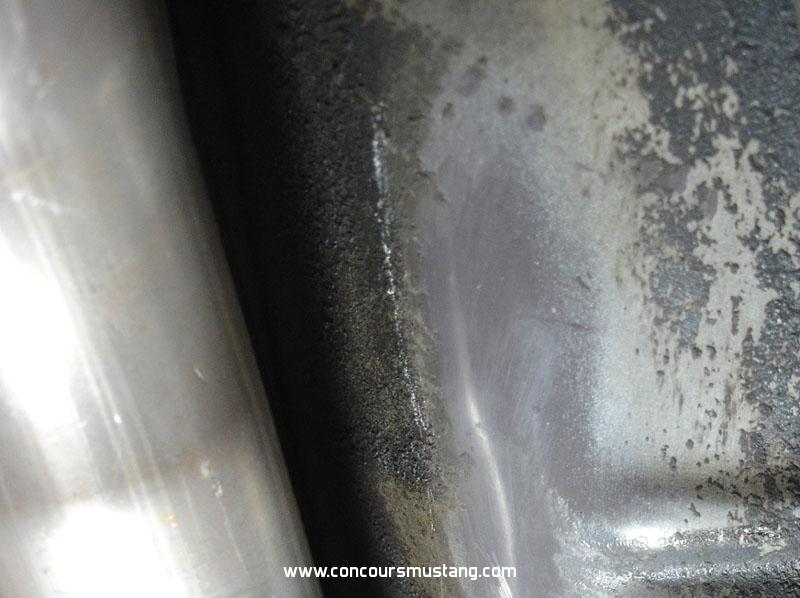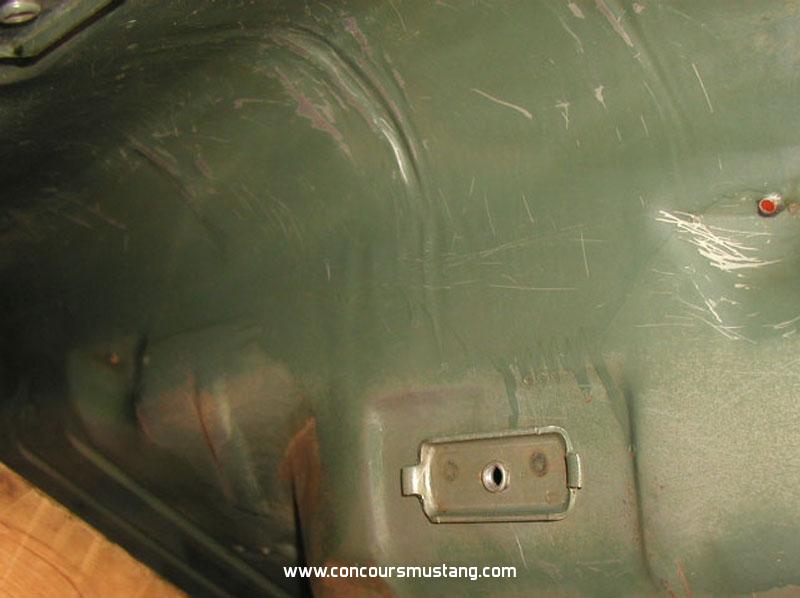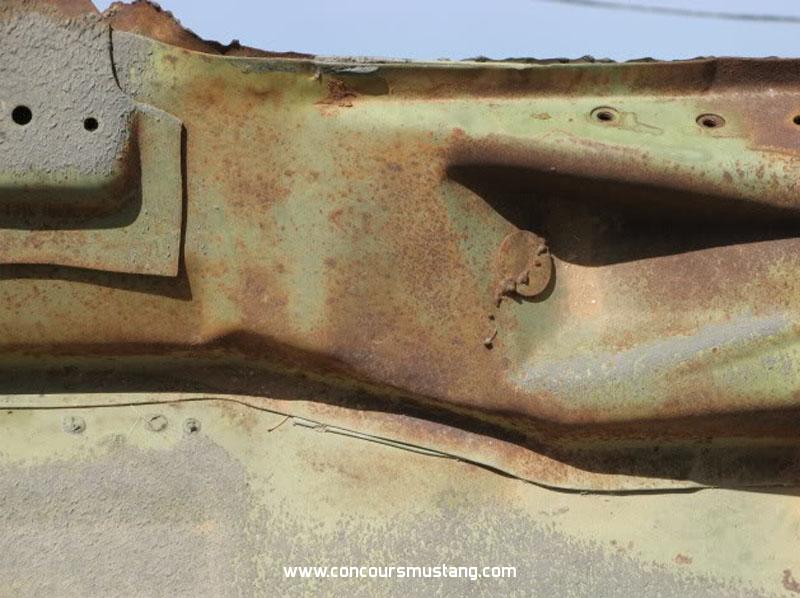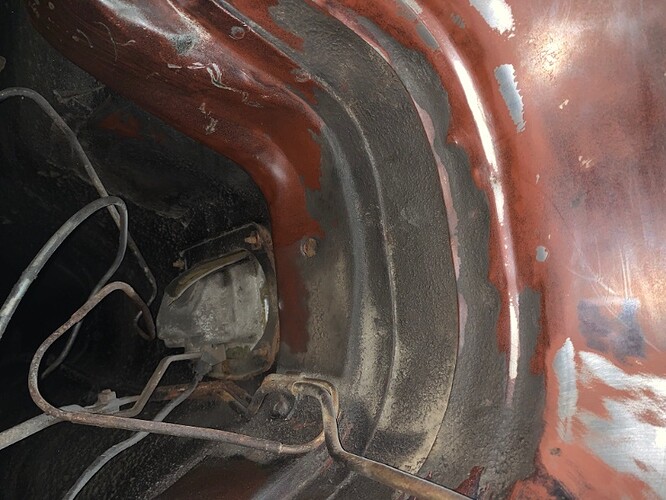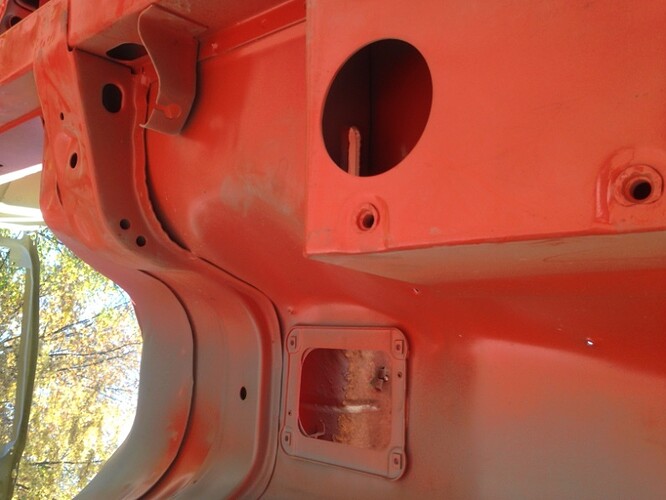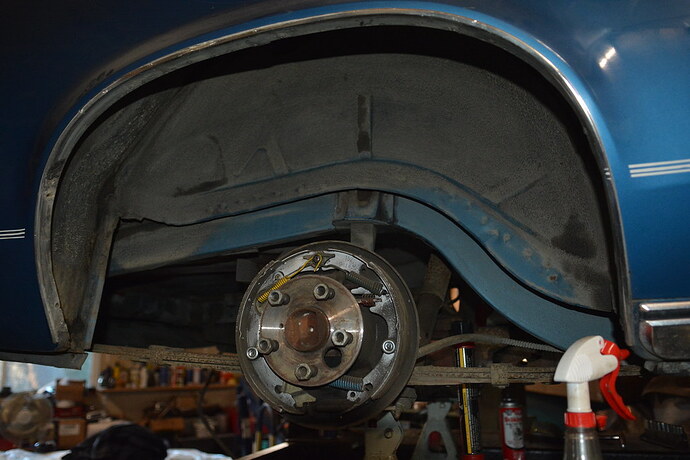I also have been trying to determine the correct under side colours for the 1970 cougars, but I had come to the concussion that they where not as the 69 mustang chart above, but the exterior colour of the car was sprayed on the underside?
The three main examples I was looking at are David Wyrwass’s Dearborn Oct 13th 1969 built Boss 302 car, and my Dearborn Oct 15th 1969 built Boss 302 (both 1970 models) and my Dearborn 27th of May 1970 cougar convertible. In all three cars, none of them have had any underside restoration and all show the underside to be painted the same colour as the exterior.
I also have another 70 cougar in unrestored condition, not played with, I don’t know underneath colour or it production date, but if push came to shove that car could also be investigated, it still has a lot of it’s original chalk marking and even muflers.
Now getting back to your car 70scj4spvert, a 28th of April 1970 convertible, you say it was a Competition Orange car with a possible dark green/olive colour on the underside. Well that sort of stuffs up my theory and it also creates more questions. You see my 27th of May 1970 Cougar Convertible is the same colour underneath as the exterior, but it is a Medium Lime Metallic car (green if you like).
Picture showing trans tunnel on my 1970 cougar convertible.

Picture showing diff tunnel on my 1970 cougar convertible

Picture showing the diff/rear axle tunnel on my competition yellow Boss 302.
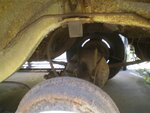
Yes the Nodular Iron 9 in is missing, so is the rear sway bar and the pinion snubber rubber and bracket. I have a photo of the car with at least the snubber rubber and bracket on the car when I purchase it, but it was not on it when the car was delivered after purchase. 
Anyway lets move on. Here is what I think is David Wyrwass’s completion blue boss 302 eliminator showing diff/rear axle tunnel.
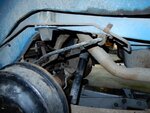
Here is two pictures taken from the WCCC youtube video about David Wyrwass’s boss 302 eliminator, in the video they talk about the colour of the underside of David’s original eliminator. It is completion blue in colour.


In the last picture of David’s car, you can see the spray pattern of the sound insulator, my car is similar but not the same, I guess it depends on the operator. On my boss 302 car the black sound deadener/insulator is wider along the trans tunnel and comes out closer to the sill panels, when I scrape off the insulator, the competition yellow paint is there.
The underside of my green cougar convertible looks too good to be original but it is, it was stored by a car collector in California for 37 years. From what I can make out, it was ordered for a Washington state dealership but has (what looks like) the pre-delivery order for a Californian dealership which is still stuck to the windscreen. I can’t really read what it says because it is folded, I can only read parts of it by looking through the windscreen, I would have to rip it off the windscreen and unfold it to read it correctly.
Hope full this helps the topic, and if anyone need some more photo’s of under my green convertible, shout out, I will see what I can do if you give me a little time. 
